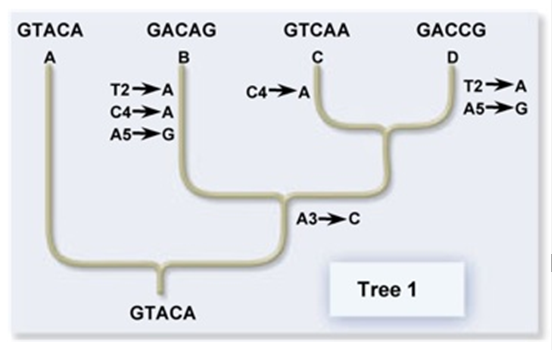Which of the following is not true of the genus Lactobacillus?
A. Many species are pathogenic in humans and animals.
B. They do not produce endospores.
C. They are responsible for spoilage of beer, milk, and meat.
D. They are used in the production of fermented vegetable foods, beverages, sour dough, hard cheeses, yogurt, and sausages.
Answer: A
You might also like to view...
Use the principle of parsimony and molecular genetic data to choose a phylogenetic tree for your hypothesis of how the species were derived from the ancestor.

A. Tree 1 requires the most mutations therefore it would be the best choice.
B. Tree 2 requires 4 mutations while Tree 1 requires 6 mutations therefore Tree 2 would be the best choice.
C. Tree 2 requires the least mutations, therefore it would be the best choice.
D. Tree 2 requires 5 mutations while Tree 1 requires 7 mutations therefore Tree 2, with the least mutations, would be the best choice.
E. Tree 1 requires 7 mutations and Tree 2 requires 4 mutations, therefore Tree 2 would be the best choice.
Select the statement about coccidioidomycosis that is false.
A. Coccidioidomycosis is most often acquired by inhalation of the arthroconidia. B. Coccidioidomycosis may disseminate throughout the body in immunocompromised individuals. C. In the United States, Coccidioidomycosis is most often encountered in the southwestern states. D. In most infected patients, Coccidiodomycosis causes an acute pneumonia characterized by production of large amounts of purulent sputum.
Which of the following is mismatched?
a. acetylcholine; muscle contraction b. endorphin; pain perception c. norepinephrine; fight-or-flight response d. serotonin; sexual function e. GABA; major inhibitor in the brain
Which of the following are cytokines produced in response to invasion by viruses
A. RIG-1 B. Interferon C. Histamine D. Interleukin E. Colony-stimulating factor